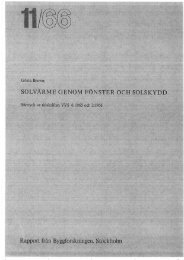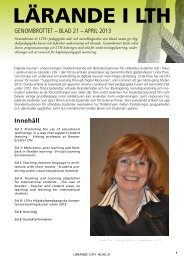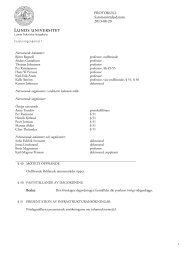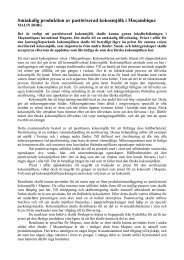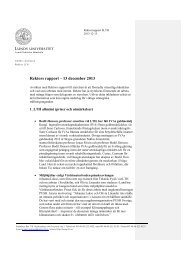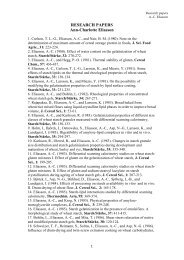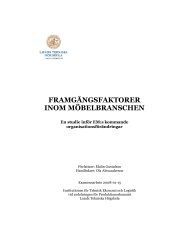User Experience Design at Sony Ericsson - Introducing the Virtual Pet
User Experience Design at Sony Ericsson - Introducing the Virtual Pet
User Experience Design at Sony Ericsson - Introducing the Virtual Pet
You also want an ePaper? Increase the reach of your titles
YUMPU automatically turns print PDFs into web optimized ePapers that Google loves.
6. <strong>User</strong> <strong>Experience</strong> Frameworks<br />
Wh<strong>at</strong> is presented below is a selection of recent <strong>the</strong>ories and frameworks th<strong>at</strong> aim to support <strong>the</strong> design of a total<br />
user experience in a more s<strong>at</strong>isfying way than traditional usability does. It is not in <strong>the</strong> scope of this paper to rel<strong>at</strong>e<br />
<strong>the</strong>se frameworks to each o<strong>the</strong>r, but r<strong>at</strong>her to introduce <strong>the</strong>m as <strong>the</strong>ories to support discussion on user experience<br />
design <strong>at</strong> <strong>Sony</strong> <strong>Ericsson</strong>. There, <strong>the</strong>se approaches might widen <strong>the</strong> discussion on how to design for soft use<br />
qualities in a more system<strong>at</strong>ic way.<br />
Rhea – A New Perspective on <strong>Design</strong>: Focusing on Customer <strong>Experience</strong><br />
Rhea (1992) argues th<strong>at</strong> r<strong>at</strong>her than designing good products, <strong>the</strong> central challenge for designers is to design<br />
s<strong>at</strong>isfying customer experiences. The <strong>Design</strong> <strong>Experience</strong> model is introduced to highlight th<strong>at</strong> people have a<br />
complete lifecycle with a product, ranging from first involvement to last resolution.<br />
The <strong>Design</strong> <strong>Experience</strong> Model<br />
The model contains four stages: Life context, engagement, experience and resolution. These stages are followed<br />
linearly but are not necessarily of equal importance – different products weigh <strong>the</strong> stages differently. If a customer<br />
is diss<strong>at</strong>isfied, s/he may choose to exit <strong>the</strong> cycle <strong>at</strong> any time.<br />
Stage 1 – Life Context<br />
The first stage covers everything a user thinks, feels and does. Needs, concerns and problems are considered as<br />
well as beliefs, <strong>at</strong>titudes and perceptions. This stage is dynamic; it changes constantly as <strong>the</strong> customer is influenced<br />
by <strong>the</strong> micro and macro environment around him/her. Rhea suggests a number of methods th<strong>at</strong> can help<br />
companies keep up with this constant change; ethnographic studies, expert interviews, identity studies, behavioral<br />
studies, segment<strong>at</strong>ion studies, demographic studies and human factors studies. All <strong>the</strong>se techniques aim <strong>at</strong><br />
deepening <strong>the</strong> understanding of customers’ needs, concerns and preferences.<br />
Stage 2 – Engagement<br />
In this stage, design must accomplish three tasks:<br />
Cognitive Presence Customers must become aware of <strong>the</strong> product as distinct from its competitors. The design<br />
must trigger one of <strong>the</strong> five senses.<br />
Attraction Customers must become interested in <strong>the</strong> product. <strong>Design</strong> elements must grab and hold<br />
customers’ interest.<br />
Communic<strong>at</strong>ion The design must communic<strong>at</strong>e <strong>the</strong> product’s key, positive <strong>at</strong>tributes. The design must<br />
include <strong>at</strong>tributes which customers perceive as relevant.<br />
17



